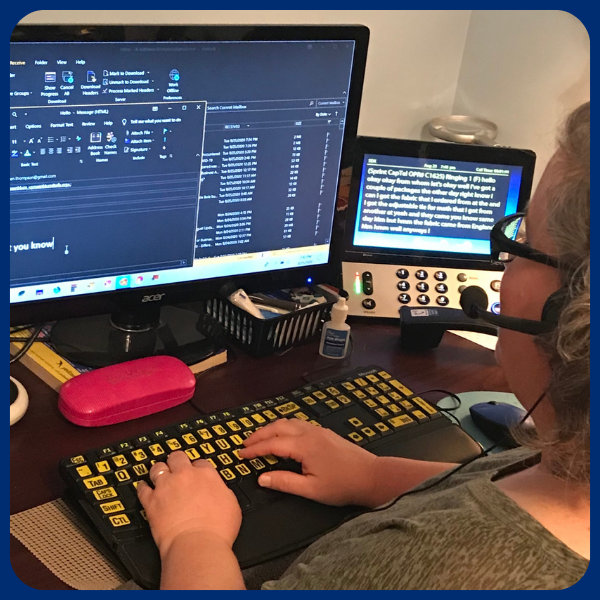The AFB Research team has worked for over a year on the Workplace Technology Study to explore the influence of technology on the employment experience of people who are blind or visually impaired. This study, which consisted of focus groups, 323 survey respondents, and 25 personal interviews, also investigated the effects of inaccessible technology on the job search, interviewing, and onboarding processes. It turns out that the impact is significant.
Imagine you are a new college graduate. You’ve worked hard for several years, preparing yourself for the workforce. You’ve consulted mentors, professors, and others in your network, and you’ve built a solid resume, highlighting your skills and experience.

Practicing self-advocacy, you email both the website administrator and the human resources managers to ask for accessible alternatives to your dilemmas. One response instructs you to ask a friend or family member to help you complete the application, and another response directs you to skip the website process and send your resume directly to the company. You worry that having someone fill out the application on your behalf will send the message to the hiring manager that you’re not capable of performing the work independently. Like voting, you also understand that you should have the same right to privacy during the application process as anyone without a disability.
On yet another website, you’re able to create an account and upload your resume – success! – but when you start the screening assessments, your screen reading software once again cannot access the information from the third-party application you’re redirected to. You visit other job listing websites with similar results. What’s more, now you’re completely unsure how to navigate the online job search.
Even if you manage to navigate the recruiting and job board websites, you still may face accessibility barriers when you progress through the interview and onboarding processes. Many of the third-party computer applications companies use to handle evaluations, training, and employment forms are completely inaccessible to people who are blind or have low vision. In essence, you’ve made it to the conference room, but you can’t take a seat at the table.

These are just a few examples of how the hiring and onboarding process can be problematic for people with disabilities. When developers create websites and applications that do not consider accessibility in the beginning stages, a whole cross-section of qualified and employable individuals are excluded. Not only is this discriminatory to the potential candidate, but a disservice to the potential employer who is missing out on the opportunity to interview someone who could be a major asset to the company.
It is imperative that people with disabilities have the same access to information, interactions, and services as nondisabled persons with the same privacy, independence, and ease of use. Website and applications that are not accessible create barriers to education, telehealth, government services, critical pandemic-related information, employment and more. Often websites and applications are missing critical accessibility features that make it challenging, or even impossible, for people who are blind or visually impaired to navigate. If implementing a fully accessible website seems daunting, you’re right, it can be difficult to know where to start and what to do.
The Americans with Disabilities Act requires that websites and web applications are accessible to people with disabilities, but clear and enforceable guidelines would vastly help ensure that everyone is on the same page about what is accessible, usable, feasible, and doable. These guidelines would also help to eliminate the barriers to employment that people with disabilities currently face and put digital infrastructure on the same level as physical infrastructure. With a level playing field that allows for independent and private hiring processes, companies would discover an untapped pool of qualified candidates that bring robust and diverse skills to the table.
AFB is committed to creating a world of no limits for people who are blind or visually impaired, so we continue working toward equity in accessing digital goods, services, and information.
